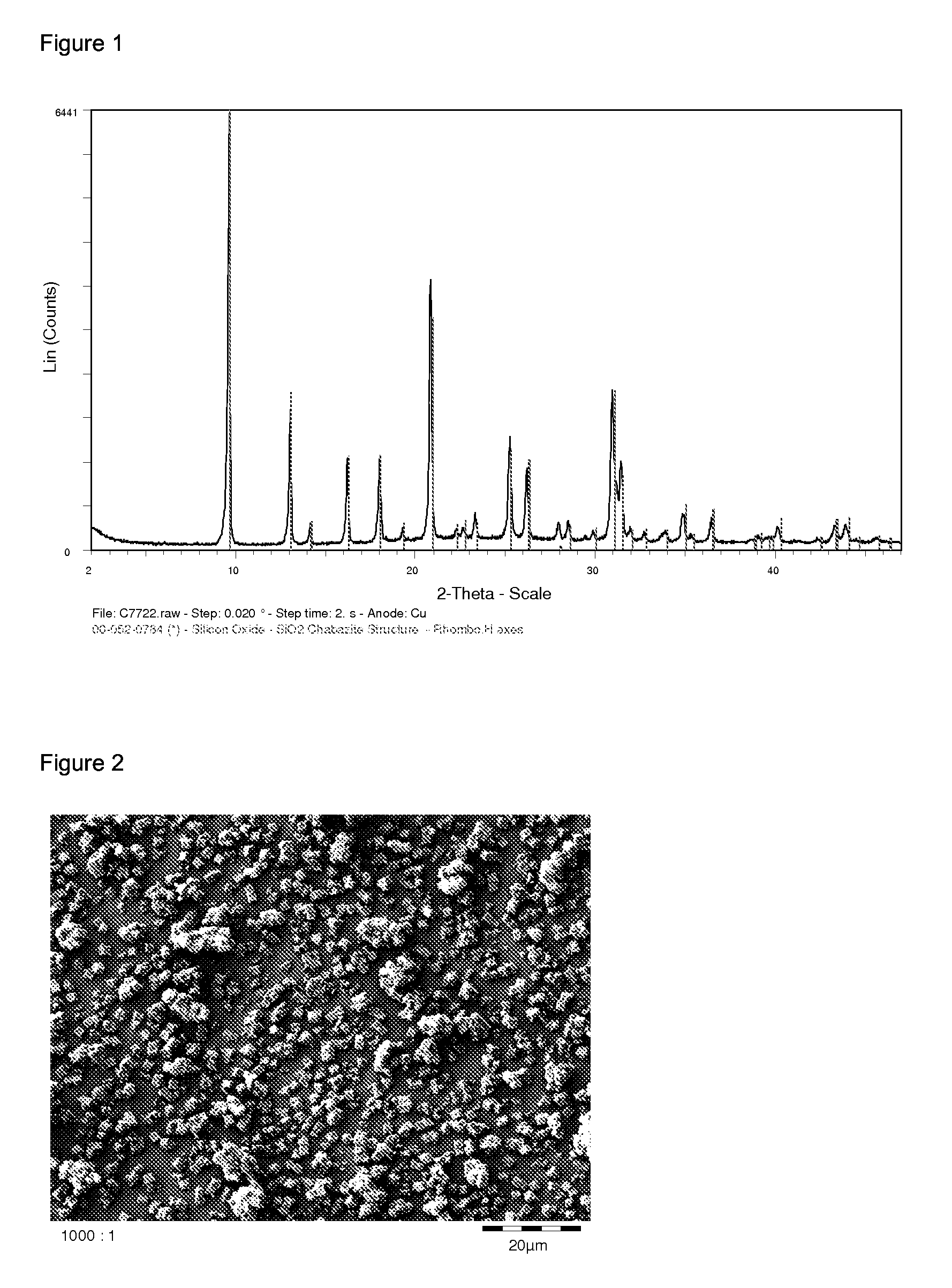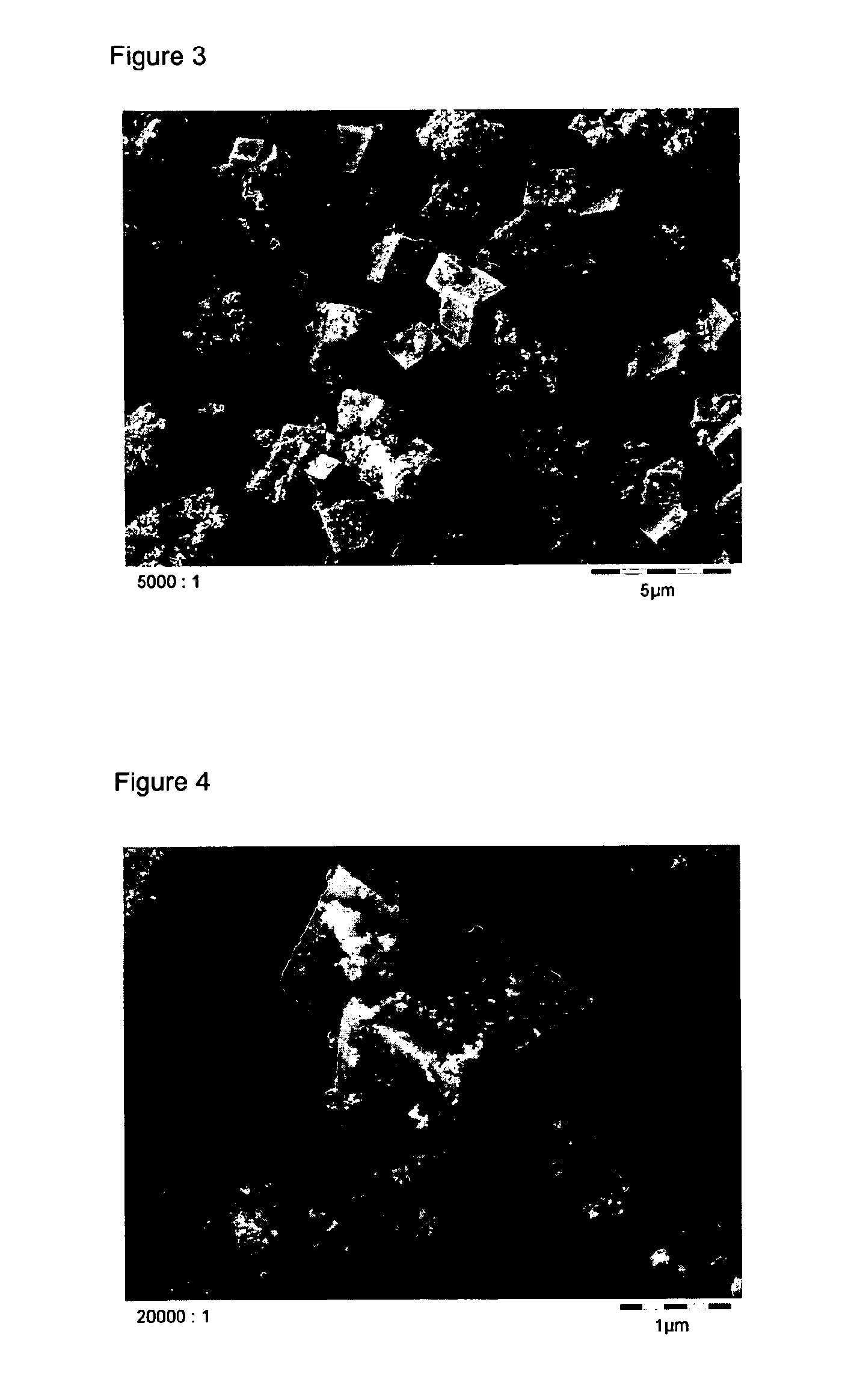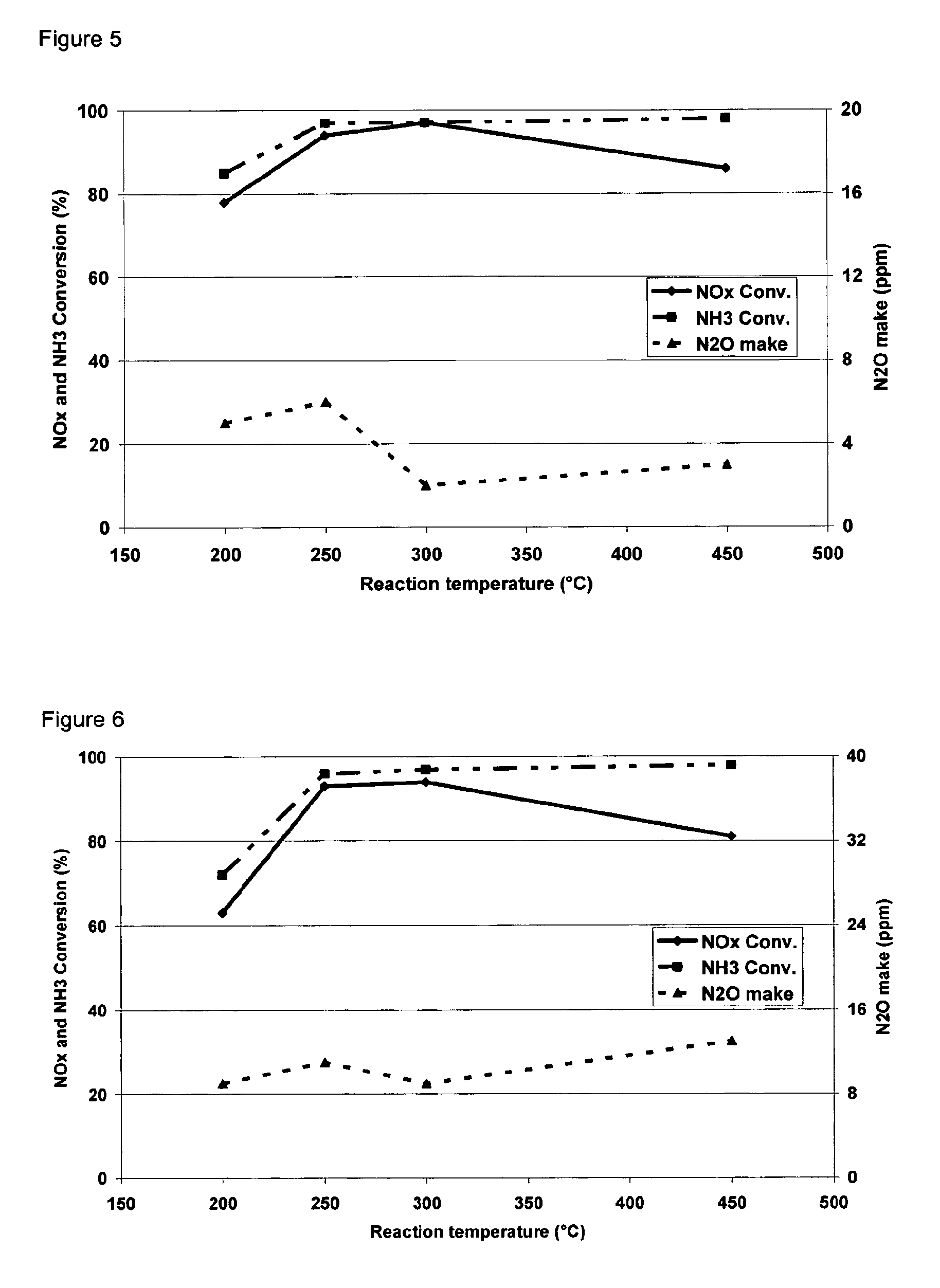Process for the preparation of zeolites having CHA structure
a technology of zeolitic materials and crystal structures, which is applied in the direction of separation processes, physical/chemical process catalysts, silicon compounds, etc., can solve the problems of poor scr performance of an alkali-metal containing cuchabazite, instability of the zeolite structure, and dealumination which can occur during ion-exchange steps, so as to save time and cost
- Summary
- Abstract
- Description
- Claims
- Application Information
AI Technical Summary
Benefits of technology
Problems solved by technology
Method used
Image
Examples
example 1
Production of an Alkali Metal (Na) Free Chabazite and its Use in Catalysis
1.1 Preparation of the Synthesis Gel
[0133]The following starting materials were employed:[0134]Trimethyl-1-adamantylammonium hydroxide (TMAA, 13.26 wt.-% in water)[0135]Tetramethylammonium hydroxide (TMAOH, 25 wt.-% in water (Aldrich, Lot 1368537))[0136]Aluminum triisopropylate (Aldrich 217557)[0137]Ludox AS40 (Grace Davison)
[0138]In a 5 liter beaker, 729.7 g of TMAA and 231.1 g of TMAOH solution were mixed. This solution was stirred for 10 min at room temperature. Then, 86.6 g of Aluminum triisopropylate were added, and the resulting suspension was stirred for about 60 min. Subsequently, 952.6 g of Ludox AS40 were added, and the resulting suspension was stirred for about 20 min.
[0139]The pH of the obtained suspension was measured as 14.2 where the OH / Si was 0.172.
[0140]The suspension had a composition with the following molar ratios: 36 SiO2:2.4 Al isprop.:2.6 TMAA:3.6 TMAOH:434 H2O. This gel was transferred ...
example 2
Preparation of Cu Chabazite Catalyst for SCR
[0145]A Cu containing catalyst was prepared by ion-exchange with copper acetate. A 0.3 M copper (II) acetate monohydrate solution was prepared by dissolving 96 g of the copper salt in 1.6 L of deionized water at 60° C. 300 g of the calcined zeolite of example 1 was then added to this solution. An ion-exchange reaction between the H-form of the calcined zeolite described in example 1 and the copper ions was carried out by agitating the slurry at 60° C. for 1 hour. The pH was between 4.5 and 4.8 during the reaction. The resulting mixture was then filtered, washed until the filtrate had a conductivity of −1, which indicated that substantially no soluble or free copper remained in the sample, and the washed sample was dried at 90° C. The obtained Cu catalyst comprised CuO at 3.29% by weight and Na at 300 ppm, both reported on a volatile free basis. The BET surface of the calcined material was 468 m2 / g, determined according to DIN 66131, and th...
example 3
SCR Test of Sample from Example 2
3.1 Preparation of a Slurry
[0146]150 g of the spray-dried and calcined zeolitic material containing Cu and having CHA framework structure, obtained according to example 6 was mixed with 358 ml of deionized water. The mixture was ball-milled for 11 hours to obtain a slurry which comprised 90% particles smaller than 10 micrometer. 26 g of zirconium acetate in dilute acetic acid (containing 30% ZrO2) were added to the slurry with agitation.
3.2 Coating
[0147]The slurry was coated onto 1″D×3″ L cellular ceramic cores having a cell density of 65 cpsc (cells per square cm) (400 cpsi (cells per square inch)) and a wall thickness of 6.5 mm. The coated cores were dried at 110° C. for 3 hours and calcined at 400° C. for 1 hour. The coating process was repeated to obtain a target washcoat loading of 0.146 g / cm3 (2.4 g / in3). The washcoat loading is defined as the dry weight gain on the honeycomb with respect to volume.
3.3 Measuring NOx Selective Catalytic Reductio...
PUM
| Property | Measurement | Unit |
|---|---|---|
| molar ratio | aaaaa | aaaaa |
| molar ratio | aaaaa | aaaaa |
| temperature | aaaaa | aaaaa |
Abstract
Description
Claims
Application Information
 Login to View More
Login to View More - R&D
- Intellectual Property
- Life Sciences
- Materials
- Tech Scout
- Unparalleled Data Quality
- Higher Quality Content
- 60% Fewer Hallucinations
Browse by: Latest US Patents, China's latest patents, Technical Efficacy Thesaurus, Application Domain, Technology Topic, Popular Technical Reports.
© 2025 PatSnap. All rights reserved.Legal|Privacy policy|Modern Slavery Act Transparency Statement|Sitemap|About US| Contact US: help@patsnap.com



